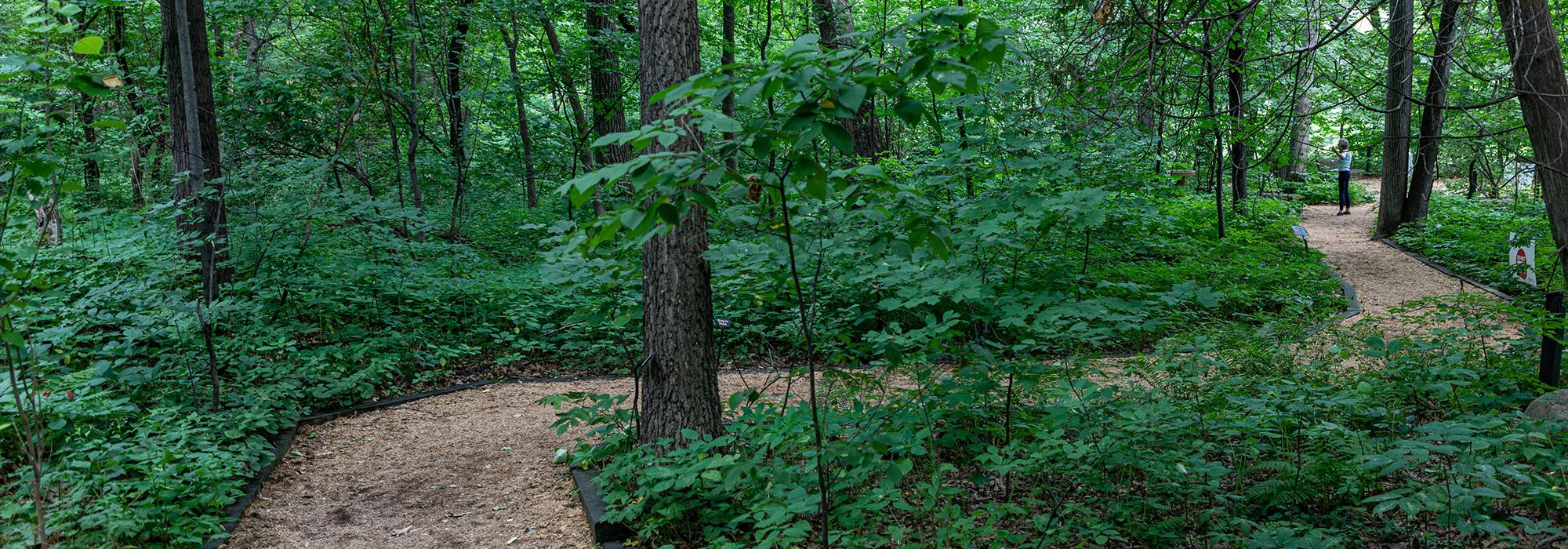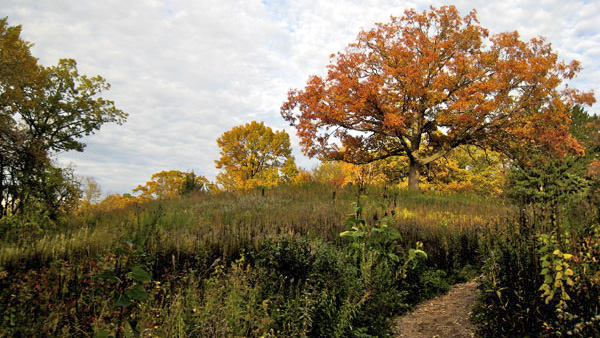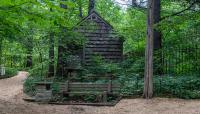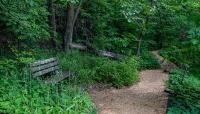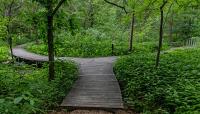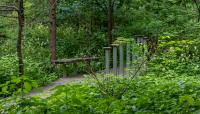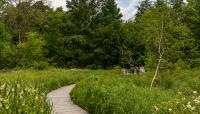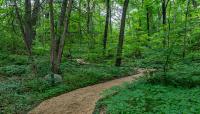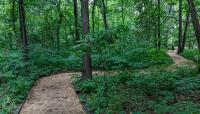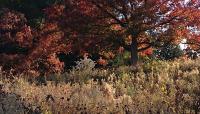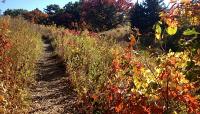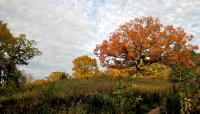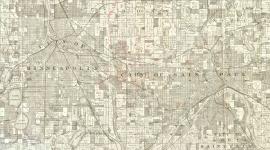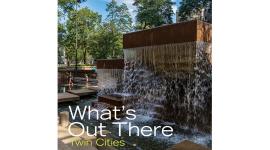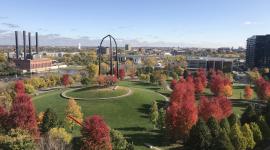Landscape Information
In 1907, botanist Eloise Butler and colleagues petitioned the city’s Park Board to establish a botanical reserve within Glenwood (now Theodore Wirth) Park to conserve the native flora from future development. Three acres of wetland, meadow, and wooded slopes in the eastern section of the park were set aside as the nation’s first public wildflower garden. The following year, the garden acreage was doubled to include a marsh, a meandering spring-fed stream which was damned to make a small pond. A pinetum comprised of Norway and white pines, junipers, and yews was begun in 1909.
Butler became the garden’s first permanent curator in 1911. She collected and transplanted native flora, adding to the extant orchids, sundew, trout lilies, irises, asters, prairie grasses and dogwoods. In 1924, Butler provided the funds to fence the garden; she was such a formative force in the garden that the Park Board named it in her honor in 1929 and planted a pin oak tree in her name after her death in 1933.
In the 1970s, a number of elms were lost to Dutch elm disease, with the reduction of tree canopy resulting in a diminishment of the bog and wildflower populations. Replanting efforts and overall maintenance of the fifteen-acre botanical preserve have been undertaken by the Minneapolis Park and Recreation Board, which has managed the park since 1907. The wildflower garden includes a 2/3-mile winding footpath, rustic gates, footbridges, a shelter erected in 1970, and a birding terrace.



